Property Sold to Benefit the Yorkshire Sculpture Park Joan Miró Follow Souvenir de la Tour Eiffel incised with the artist's name and number and the Parellada foundry mark 'Miró 4/6' on the top side of the tray element bronze 334 x 53.1 x 61.5 cm (131 1/2 x 20 7/8 x 24 1/4 in.) Conceived in 1977 and cast in 2011, this work is number 4 from an edition of 6.
Provenance Courtesy of the Successió Miró Exhibited Palma de Mallorca, Llonja, Miró damunt paper, December 1993 – January 1994, p. 12 (another example exhibited) Dublin, Irish Museum of Modern Art, Alexander Calder and Joan Miró , 4 April - 1 July 2007, pp. 28-29, 66-67, 77 (another example exhibited and illustrated, p. 28, 66-67, 77) Lindau, Stadtmuseum Lindau, Miró - Sternennächte , 24 March - 1 September 2013, pp. 104-105 (another example exhibited and illustrated, p. 105) Yorkshire Sculpture Park, Miró Sculptor , 17 March 2012 - 6 January 2013, pp. 5, 56-57, 126, 158 (another example exhibited and illustrated, pp.56-57, 126) London, Waddington Custot Galleries, Two Pataphysicians Flanagan Miró , 8 October - 8 November 2014, no. 12, pp. 38-39, 77, 81-82 (another example exhibited and illustrated, p. 39) London, Simon Dickinson, Eight Sculptures by Joan Miró , 29 January - 1 April 2015, pp. 43-47 (illustrated, pp. 43, 45-46) Madrid, Galería Elvira González, Joan Miró , 12 January - 16 March 2017 (another example exhibited) Santander, Centro Botín, Joan Miró Sculptures 1928 - 1982 , 20 March - 2 September 2018 (another example exhibited) Literature Franco Basile, Joan Miró Bologna, 1997, p. 257 (another example mentioned) Emilio Fernández Miró & Pilar Ortega Chapel, Joan Miró Sculptures. Catalogue raisonné 1928 - 1982 , Le Coudray, 2006, no. 345, p. 325 (another example illustrated) Miró and the object , exh. cat., Fundacio Joan Miró Barcelona, 2015, pp. 52, 53 (another example illustrated, p. 53) Catalogue Essay Souvenir de la Tour Eiffel , Joan Miró’s playfully adorned Eiffel Tower sculpture is an assembly of an array of different objects cast in bronze: a wicker lamp base, a tray full of half-used tubes of paint, and a towel headdress. Rising three-metres high, executed in 1977 - five years before the artist’s death, the sculpture furthermore utilises some of Miró’s signature idiosyncracies developed over the course of seven decades, namely a Surrealist edge, gestural vigour, and a sense of figurative likeness tinted with hues of poetic abstraction. Upon writing about this sculpture, American writer William Jeffett could not help but mention a three-lined note found in the artist’s studio, reading: ‘Big object at Parellada’s / Make it very big / Think about the Eiffel Tower’ ( Miró and the Object , exh. cat., Fundació Joan Miró p. 52). Doubtlessly referential of the artist’s Souvenir de la Tour Eiffel , these lines elucidate the cultural elements from which Miró conceptualised the piece. In this sense, Souvenir de la Tour Eiffel is a celebration of the artist’s dual heritage: that of his place of birth, Catalonia, and that of his alternate home, France. Dividing his time between the two from the early 1950s onwards, Miró let their respectively distinct cultures inform and nurture his artistic production. The conjunction of Catalan and Parisian elements in Souvenir de la Tour Eiffel thus bears an almost autobiographical inflection, in a sense equating the sculpture to a self-portrait. This personifying feat is enhanced by the tower’s adornments: as it proudly boasts traditional Catalan wear, Miró’s mock iron lady becomes a displaced character in uniform. Not unlike Arte Povera artists who imbued their works with Italian symbols, Miró pronounces an ode to his country of birth with Souvenir de la Tour Eiffel’s culturally charged details. By decorating the universally celebrated icon of the Eiffel Tower with the Catalan peasant’s pitchfork, the Spanish artist equates the cultural grandeur of one to that of the other, suggesting an inherent sense of shared nobility. As the four-pronged spear soars high above the tower’s tip, Miró further amplifies the celebration of Catalonia’s cultural potential, crystalising, by the same token, the superior importance of its iconography in art. As Catalan history had brimmed with instances of struggle in the years surrounding the creation of this work -with namely the formal ban of a sepa
Property Sold to Benefit the Yorkshire Sculpture Park Joan Miró Follow Souvenir de la Tour Eiffel incised with the artist's name and number and the Parellada foundry mark 'Miró 4/6' on the top side of the tray element bronze 334 x 53.1 x 61.5 cm (131 1/2 x 20 7/8 x 24 1/4 in.) Conceived in 1977 and cast in 2011, this work is number 4 from an edition of 6.
Provenance Courtesy of the Successió Miró Exhibited Palma de Mallorca, Llonja, Miró damunt paper, December 1993 – January 1994, p. 12 (another example exhibited) Dublin, Irish Museum of Modern Art, Alexander Calder and Joan Miró , 4 April - 1 July 2007, pp. 28-29, 66-67, 77 (another example exhibited and illustrated, p. 28, 66-67, 77) Lindau, Stadtmuseum Lindau, Miró - Sternennächte , 24 March - 1 September 2013, pp. 104-105 (another example exhibited and illustrated, p. 105) Yorkshire Sculpture Park, Miró Sculptor , 17 March 2012 - 6 January 2013, pp. 5, 56-57, 126, 158 (another example exhibited and illustrated, pp.56-57, 126) London, Waddington Custot Galleries, Two Pataphysicians Flanagan Miró , 8 October - 8 November 2014, no. 12, pp. 38-39, 77, 81-82 (another example exhibited and illustrated, p. 39) London, Simon Dickinson, Eight Sculptures by Joan Miró , 29 January - 1 April 2015, pp. 43-47 (illustrated, pp. 43, 45-46) Madrid, Galería Elvira González, Joan Miró , 12 January - 16 March 2017 (another example exhibited) Santander, Centro Botín, Joan Miró Sculptures 1928 - 1982 , 20 March - 2 September 2018 (another example exhibited) Literature Franco Basile, Joan Miró Bologna, 1997, p. 257 (another example mentioned) Emilio Fernández Miró & Pilar Ortega Chapel, Joan Miró Sculptures. Catalogue raisonné 1928 - 1982 , Le Coudray, 2006, no. 345, p. 325 (another example illustrated) Miró and the object , exh. cat., Fundacio Joan Miró Barcelona, 2015, pp. 52, 53 (another example illustrated, p. 53) Catalogue Essay Souvenir de la Tour Eiffel , Joan Miró’s playfully adorned Eiffel Tower sculpture is an assembly of an array of different objects cast in bronze: a wicker lamp base, a tray full of half-used tubes of paint, and a towel headdress. Rising three-metres high, executed in 1977 - five years before the artist’s death, the sculpture furthermore utilises some of Miró’s signature idiosyncracies developed over the course of seven decades, namely a Surrealist edge, gestural vigour, and a sense of figurative likeness tinted with hues of poetic abstraction. Upon writing about this sculpture, American writer William Jeffett could not help but mention a three-lined note found in the artist’s studio, reading: ‘Big object at Parellada’s / Make it very big / Think about the Eiffel Tower’ ( Miró and the Object , exh. cat., Fundació Joan Miró p. 52). Doubtlessly referential of the artist’s Souvenir de la Tour Eiffel , these lines elucidate the cultural elements from which Miró conceptualised the piece. In this sense, Souvenir de la Tour Eiffel is a celebration of the artist’s dual heritage: that of his place of birth, Catalonia, and that of his alternate home, France. Dividing his time between the two from the early 1950s onwards, Miró let their respectively distinct cultures inform and nurture his artistic production. The conjunction of Catalan and Parisian elements in Souvenir de la Tour Eiffel thus bears an almost autobiographical inflection, in a sense equating the sculpture to a self-portrait. This personifying feat is enhanced by the tower’s adornments: as it proudly boasts traditional Catalan wear, Miró’s mock iron lady becomes a displaced character in uniform. Not unlike Arte Povera artists who imbued their works with Italian symbols, Miró pronounces an ode to his country of birth with Souvenir de la Tour Eiffel’s culturally charged details. By decorating the universally celebrated icon of the Eiffel Tower with the Catalan peasant’s pitchfork, the Spanish artist equates the cultural grandeur of one to that of the other, suggesting an inherent sense of shared nobility. As the four-pronged spear soars high above the tower’s tip, Miró further amplifies the celebration of Catalonia’s cultural potential, crystalising, by the same token, the superior importance of its iconography in art. As Catalan history had brimmed with instances of struggle in the years surrounding the creation of this work -with namely the formal ban of a sepa
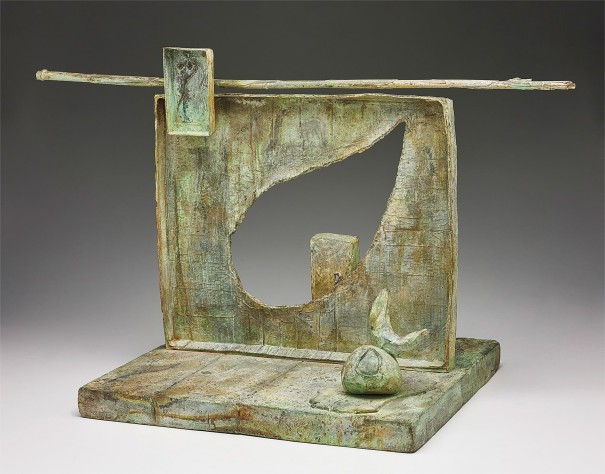
.jpg)

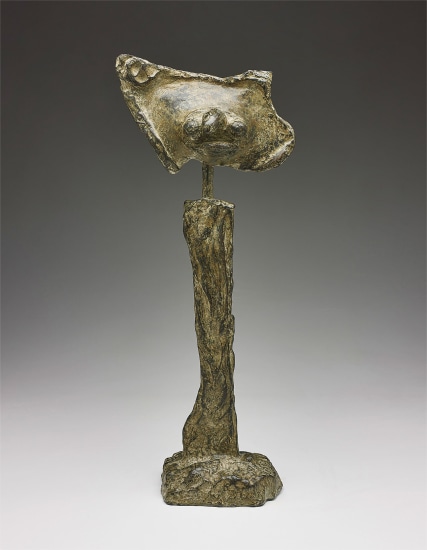




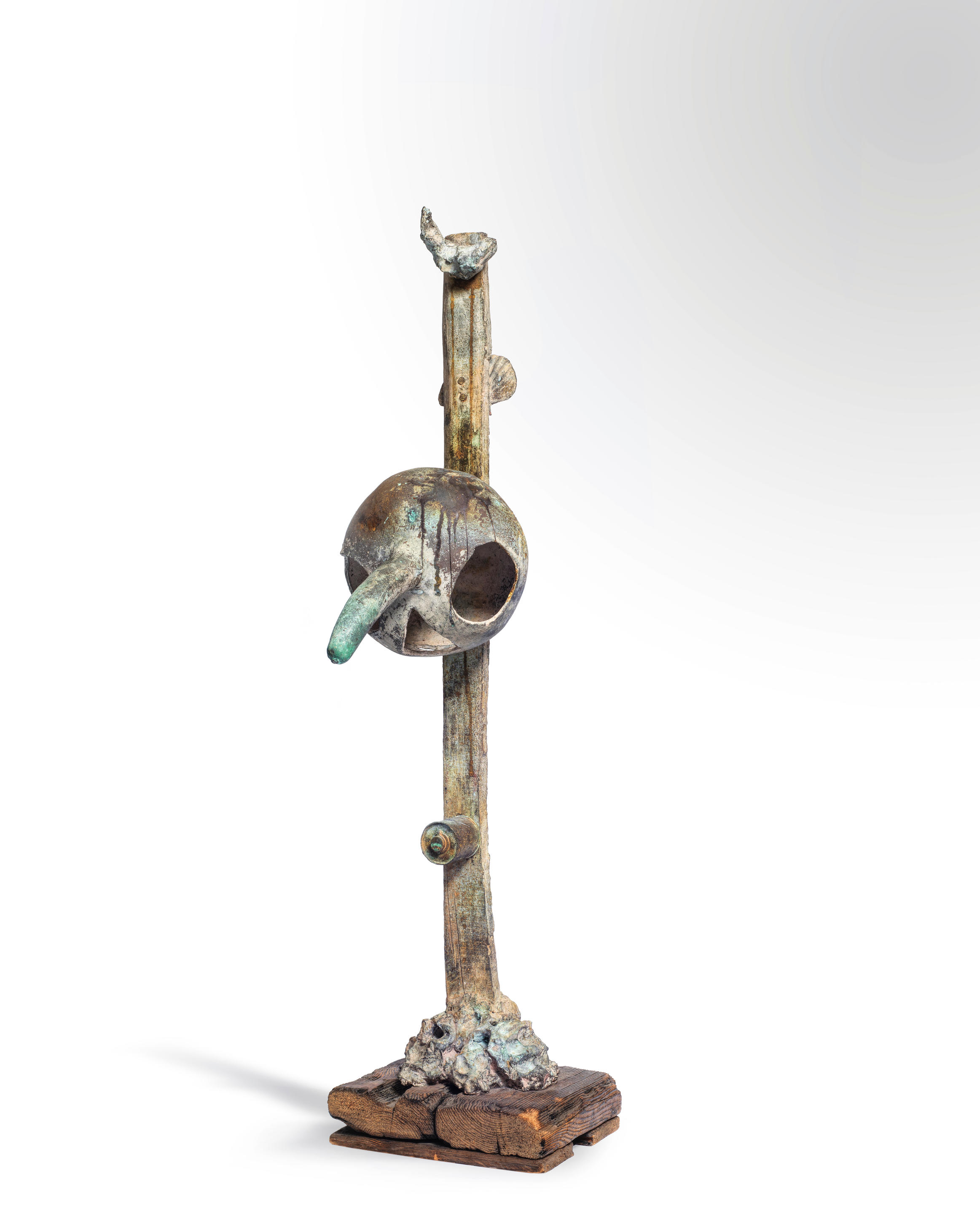



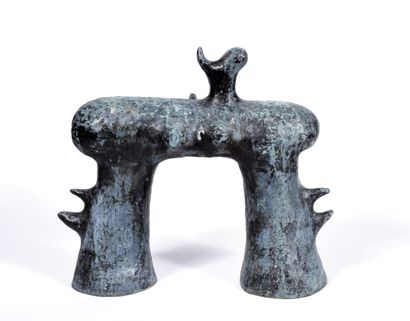
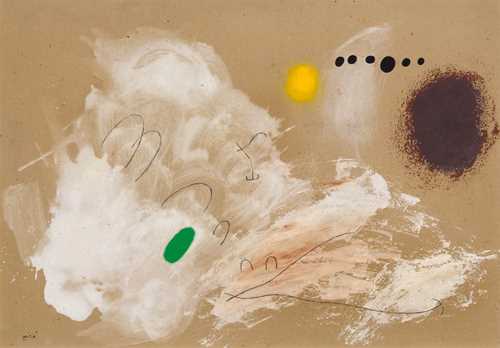

Try LotSearch and its premium features for 7 days - without any costs!
Be notified automatically about new items in upcoming auctions.
Create an alert